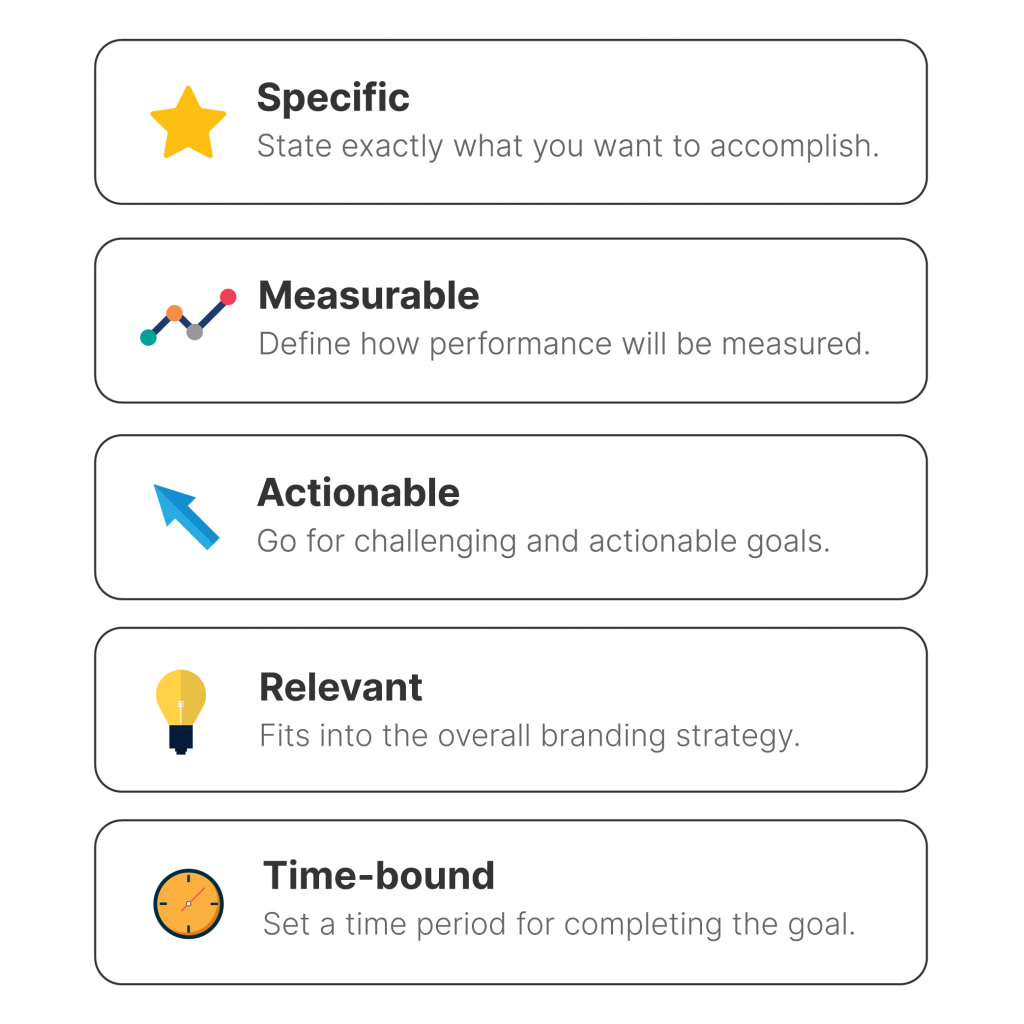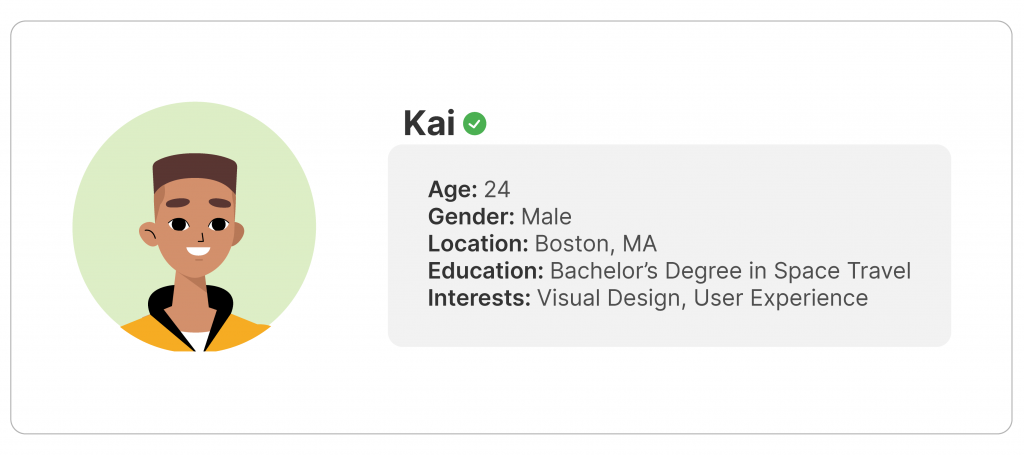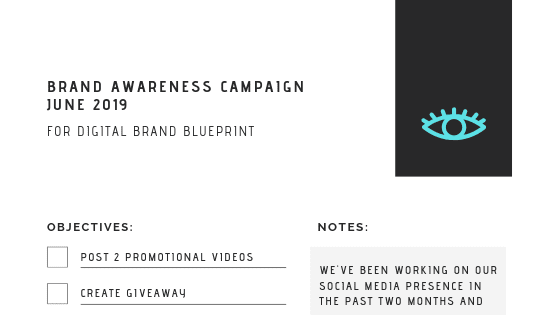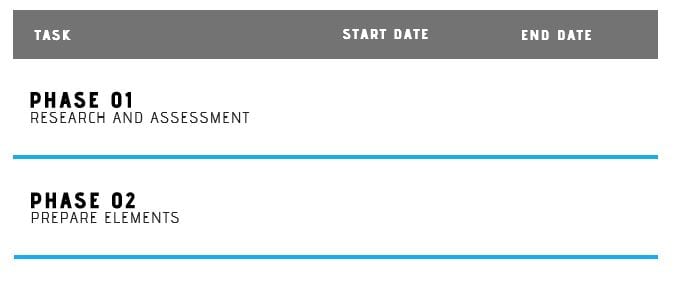There are many elements that form a brand. Being aware of what a business has to offer is the first step toward choosing that same brand over all other options.
That is why we can’t talk about brand awareness without mentioning the power of consumer choice. Whether it’s products, gadgets, services, or even simple things like information, we are all faced with many choices each day.
Conscious consumption is, therefore, the perfect way to flex our choice muscles. The more information you have about something, the more likely you are to predict the effects it will have.
So how can increasing brand awareness help your business?

Defining Brand Awareness
In Bynder’s “State Of Branding Report” for this year, more than a thousand branding and marketing professionals from different industries answered questions about their current strategy.
When asked about their biggest branding concerns in the upcoming period, the majority of 42% of respondents see “growing brand awareness” as their number one concern in 2020.
Seeing as consumers are gravitating to those that share the same values as them, every brand strives to increase awareness.
What is brand awareness?
Brand awareness is the extent to which consumers can recognize and recall a particular brand, to then connect that brand to specific ideas, goods, or services.
From an internal business perspective, raising brand awareness is part of the branding and marketing strategy. Often with a goal to get the brand in front of as many people as possible.
From the perspective of the consumer, that involves identifying, comparing, and using specific brands. Consumers choose the things they use because they are aware of the solution a brand offers to a problem.
How can you increase brand awareness?
The idea of brand awareness is to introduce your brand, connect with, and bring new consumers to the business.
It’s part of your strategy that is focused on building and marketing yourself as a recognizable brand profile.
I’d like to distinguish between the two ways that you can raise brand awareness: active and passive.
Passive awareness spreading which happens through creating effective brand identity and messaging. Active awareness raising is done through marketing and campaigning.
Here are the most common ways to increase brand awareness:
- Influencer marketing
- Direct advertising
- Real-life events
- Community participation and support
- Content marketing
- Brand awareness campaigns
How To Run a Brand Awareness Campaign
A brand awareness campaign is a set of coordinated promotional activities carried out by a brand with the goal to increase the recognition of its business.
10 Actionable Steps For Your Brand Awareness Campaign
- Create strong brand identity elements. That includes brand logos, colors, mission, purpose, and more.
- Set relevant goals and objectives for your campaign. Use the smart goal framework: specific, measurable, actionable, relevant, and time-bound.
- Define your target audience. Make sure you know who it is that you want to reach with your awareness campaign.
- Document your strategic approach. The message of your campaign and the strategy you’re going to use to convey it to consumers.
- Plan for delivery of campaign content. Decide on your core content pieces and the social platforms and channels of your campaign.
- Assign key performance metrics. Make sure you know what are your main performance indicators.
- Set a campaign timeline and budget. Organize these important elements behind the scenes.
- Prepare all the necessary materials and content. Get everything ready for the active campaigning part.
- Carry out all awareness campaign activities. During your period of campaigning, start moving things from your notes into the real world.
- Analyze and report on success and performance. After your campaign is over, create a summary of important learnings.
When it’s done right, it will consistently power the growth of your brand.
In this article, I will discuss how you can run brand awareness campaigns. Here is how you can organize a brand awareness campaign from start to finish and get you the success you set out to reach.
Set campaign goals and objectives
The first step toward increasing awareness is to build exposure. Whether that be through content marketing, direct advertisements, influencers, community events, and so on.
In simple terms, it means finding a way to introduce your target audience to your brand and what you stand for. Therefore, to capture their attention and spark an interest in what it is you have to offer.
Brand exposure happens by being present in the right places, open for the right people to get to know you.
With that in mind, how exactly does a successful campaign look like for you? What are your brand awareness goals?
S.M.A.R.T Goals
A popular practice for setting goals is by using the SMART framework, which means that each goal should be specific, measurable, attainable, relevant, and time-bound.

That might go something like this:
- Get 5,000 new followers on Instagram by January
- Increase social sharing on Facebook by 40%
- Increase website traffic by 50% in the next 3 months
Make sure that your goal is realistic and achievable. Don’t be vague with the set-up, set specific objectives that you can track and measure when the time comes.
Define your campaign target audience
Second, comes the connection that you establish with your people. Now that they know that you exist, why would your brand be of any interest to them?

At this part, it’s necessary to consider not only who it is you’re targeting, but their state of being as well.
When creating awareness, you’re preaching to people that don’t know about you yet. These so-called “cold audiences” are consisting of people that are not yet familiar with your brand or what you do.
They are, however, aware of their needs. They just don’t know to recognize you as the solution to their problems yet.
Connect your solution to a problem that they have. Consequently, raising awareness that you exist and that you can help them.
Audience Profiles
First, narrow down their demographic characteristics such as: age, location, income, education, job title, gender, or anything else that will be useful to know ahead.
Then you can go a step further and think about their lifestyle and how you fit into their daily life. Here are some questions you need to answer:

- How does a typical day for your target audience look like?
- What kind of activities do they enjoy in their free time?
- Some goals they want to achieve?
- What are some problems they face?
Create a picture of how they spend their time and attention during the day. That will make it easier to find a place for your brand in their lives.
They shouldn’t be the ones that make changes in their lives to incorporate your brand. You need to fit into their routine and help them by making the problems that they face daily easier to solve.
Connecting with them can be done by finding common ground. It’s all about the vision that you share, the things that you can help each other accomplish, and more.
If you’d like to read more about designing consumer or audience profiles, check out this article: How To Create Target Audience Profiles.
Outline Campaign Content and Direction
Content is the backbone of your brand awareness campaign. In this step, it’s time to come up with the strategy and communication plan to carry out your campaign.

For your campaign to have an effect on your consumer, you must have a positive impact on them. To deliver some sort of value that will make them remember you.
I’ve identified two crucial components in this step: your strategic approach and the delivery of content. It’s basically creating an outline for your campaign.
Campaign Strategy
By strategic approach, I mean the message behind your campaign and the type of media that you’re going to use to convey that message.
It is really important to have a well-defined brand identity before you create a campaign that will act as a fuel that helps your campaigns run. Here are a few things to consider:
- What is your brand story?
- Your brand mission and vision?
- What problems does your brand solve?
- How are you different than your competition?
- How can you apply all of this to your campaigns?
There are two players, in this case, you and the consumer, so what does it take on your first interaction to be successful? Create a recognizable identity.
Campaign Delivery
Think about the platforms and channels that you will be using and how they are connected with each other.
Platforms are the foundation on which you can build your brand presence, such as the web, phone apps, social media, and gadgets.
Channels serve as a more direct means of communication and include email, advertising, search engines, chatbots, phone, and more.
And while the goal of your campaign is the same everywhere, each platform may also require different types of content.
What platforms are you going to use for your campaign and how?
You need to plan the content to fit into each platform as intended, such as media dimensions, ad copy, and so on.
Formatting Content Example
Every social platform serves a different purpose. While your marketing campaign should have the same messaging it is important to think about the native environment of each social platform.
Make sure that your ad is shown in the right place for the desired result. Get into the mindset of the audience.
Second, make sure that you use the right format. I see way too many people that place improperly formatted photos as story ads these days, don’t be that person.
Let’s take Instagram ads for an example:

When you decide where to place your ad, you should think about the different use of Instagram Stories and the feed.
While viewing stories, everything happens faster, and people are looking for a quick experience. The call to action of your ad would be to swipe up.
If you’re creating a stories ad, then you definitely need to use an image with the size of 1080 x 1920 px for the best effect.
When scrolling the feed, people are more likely to stop and take a better look, read the description, and visit your profile to discover more about your brand.
If you want to place an ad on the main feed, then use an image of 1080×1080 px for the best result.
Organizing campaign flow

Assign Key Performance Indicators
Key performance indicators are the metrics that are relevant for your campaign. KPI’s are an internal way to measure and learn from your efforts.
You can assign key performance indicators by considering the goals that you’ve set for your campaign from a business point of view.
Taken into account that this is a setup to increase awareness, these performance indicators for your brand will probably include things like reach, impressions, cost per impression, and so on.
Here is a list of possible brand awareness campaign metrics:
- Content Reach
- Content Impressions
- Cost per Impression
- Social mentions
- New Followers
- Branded Search
- New referring links
- Content Engagement
Consider the needs of your campaign and address the ways that you will measure its performance and success.
Mark the timeline of your campaign
Each campaign requires a schedule that you follow. Make a plan of the touchpoints of your campaign and the expected dates that you will start and finish.

For example, it might take one week to do research and prepare the strategy of your campaign. It can take another week to complete the visuals or gather all the resources, and so on.
Plan ahead on how you’re going to manage the workflow that your campaign requires. That way you will be well prepared.
Mark the important dates of your campaign in a calendar.
Set your campaign budget
The costs of a digital campaign can vary a lot. It depends on whether you’re a team or an individual, the available budget, the length and scale of your campaign, and more.
Here are the areas you should consider and make a budget for:
- The cost of resources you need (ex. Cameras, Software, People)
- The cost of sponsored placement
- Any other cost that is relevant to your case
Campaign Activities
In the final part is where you begin moving your vision and plans out of the notes, or out of the meeting room and into action.

The workflow behind the scenes of the campaign can vary greatly depending on your organization and the scope of your campaign. However, I’d like to touch on a general format that anyone can follow.
I like to separate the workflow into three parts: pre-launch, active campaigning, and post-campaign.
This way you can clearly identify the stage, come up with the activities that need to be performed, and finally dissect that even further into specific tasks.
It will make it much easier to organize and complete everything that is on your schedule.
Pre-Launch activities
Once you’re done setting up your campaign behind the scenes, you can move on to creating the specific contents of your promotion. This part is about designing the look and feel of the project.
Campaigns usually require more than one piece of content mixed together strategically. Make sure that your message and visuals are consistent across the board.
- Design Campaign Content
- Decide on campaign timeline
- Review and approve campaign budget
- Crate final schedule
Active campaign activities
- Posting on schedule
- Tracking performance and key metrics
- Carry out all planned campaign tasks
Post campaign
After the campaign is over, and it is all about analyzing the results, creating notes about key learnings. This will help with decision making for future campaigns easier.
What worked and why? What didn’t work?
Creating successful campaigns comes from long-term experimenting and learning along the way. Your audience is unique, so you need to get in tune with them.
- Analysis of campaign results
- Create a report of success and key learnings
- Outline strategy and steps moving forward
What to do next?
The only way to create a real impact is to create positive change for your consumers.
To leave them feeling better off than they were before they got introduced to you. To be recognized as the thing that shifted their perspective in the time, they needed exactly that.
You offer something valuable and enticing, and they give you their attention in return.

